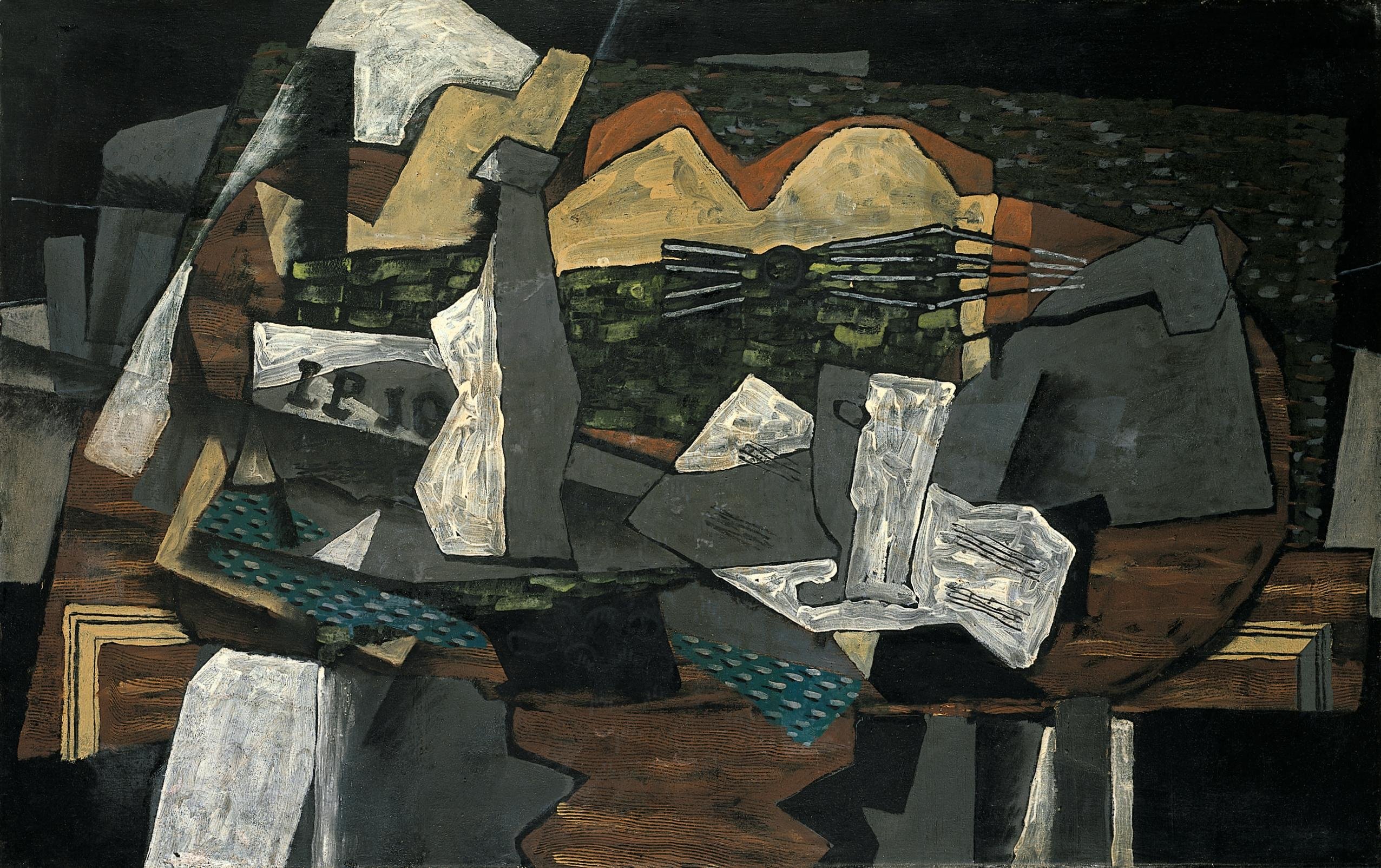Georges Braque
Still Life with Guitar, 1919

Georges Braque
Still Life with Guitar, 1919
Kunst Museum Winterthur, Legat Dr. Emil und Clara Friedrich-Jezler, 1973
Foto: Hans Humm, Zürich
In the years preceding the First World War Georges Braque and Pablo Picasso developed cubism.This was a new type of portrayal of reality: the pictorial object was fragmented into single elements and assembled freely within the pictorial surface, from which a complete form was supposed to re-emerge in the mind of the beholder when viewed.
The war brought disruption to Braque’s work. He began painting again in 1917 after recovering from a serious injury to his skull. "You know, or more to the point, you don’t know, that I now paint my pictures on a black background. It is a colour that was brought to us by Impressionism, and is very beautiful." In 1919 Braque wrote this about his new paintings to Henry Kahnweiler, a dealer and friend.
The still life objects on the black background look like a relief. The dividing lines and the areas of shade that flow between the objects are also black. Braque sought this two-dimensional effect and the interlocking of the forms, instead of a three-dimensional portrayal. He therefore worked with mediums from decorative painting, which make the surface of the canvas itself more eye-catching: the striking dot pattern on the wallpaper, the imitated woodgrain of the tabletop and base, the mixing of sand into the oil-based paints that creates a rough surface, the striking division of light and shaded areas on the carafe and glass.
At first glance this still life is hard to read, because Braque disguises the objects ingenuously. And in doing this he challenges the viewer to become an active part of the process of perception.


